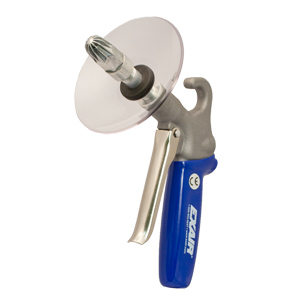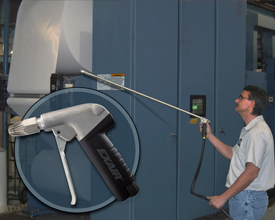Atomization is a word that can be seen throughout the industry in rinsing, coating, painting, lubricating, and cooling applications. The act of atomization is simple, we often refer to it when looking at liquids and it means to break up the liquid stream and form fine droplets. This is essentially a transfer of energy. There are two mainstream methods to atomize liquids for an application, both with their own advantages.
The first is air atomizing. This action is done by combining a stream of compressed air with either a pressurized fluid or a siphon/gravity fed liquid. The air stream can be combined with the liquid internally to the nozzle, hence Internal Mix Atomizing Nozzles. It can also combine outside of the nozzle, like the External Mix Atomizing Nozzles. We have blogged before on where to use each of these as the reason to select between Internal Mix or External Mix is its own topic.
Benefits to air atomization are, smaller droplet/particulate size is achievable. The compressed air atomization gives the ability to break up more viscous fluids to get better coverage or thinner layers of spray. Air atomization also gives the ability to use smaller amounts of liquid because the air takes up a portion of the total flow exiting any nozzle.
The second type of atomizing nozzles are hydraulic atomization. This uses the energy from the liquid being pressurized to break up the liquid stream. Sometimes there are physical impacts within the nozzle that cause the atomization, other times it is just the liquid leaving an orifice that causes the atomization. This gives the ability to still spray a liquid into droplets of various shapes, dimensions, and flow rates. The lack of compressed air often results in larger droplet sizes as well as higher liquid flow rates. Because the liquid has to be pressurized to certain levels it also becomes difficult to spray higher viscosity fluids through hydraulically atomized nozzles.
Benefits to hydraulically atomized spray nozzles range from stronger spray force for rinsing, ease of installation from not needing to plumb compressed air, ability to flow slurries, or other liquids that may clog or dry due to the design of air atomized spray nozzles.
If you would like to discuss the correct nozzle for your spray application, feel free to contact us.
Vivek Engineers #22, 1st Floor, 1st Cross, Adj. to IIMB Compound, Bilekahalli Indl. Area, Bannerghatta Road, Bangalore - 560 076 Ph : 080 - 2648 1309, 4170 1145. Mob : | |||||














